Conditions aligning for renewables boost
Numerous investors are contemplating the possibility that the Vietnamese government will soon issue a mechanism for the development of rooftop solar power. The Ministry of Industry and Trade (MoIT) sent out a document over a week ago to solicit feedback from other ministries and Electricity of Vietnam (EVN) on the related draft decision.
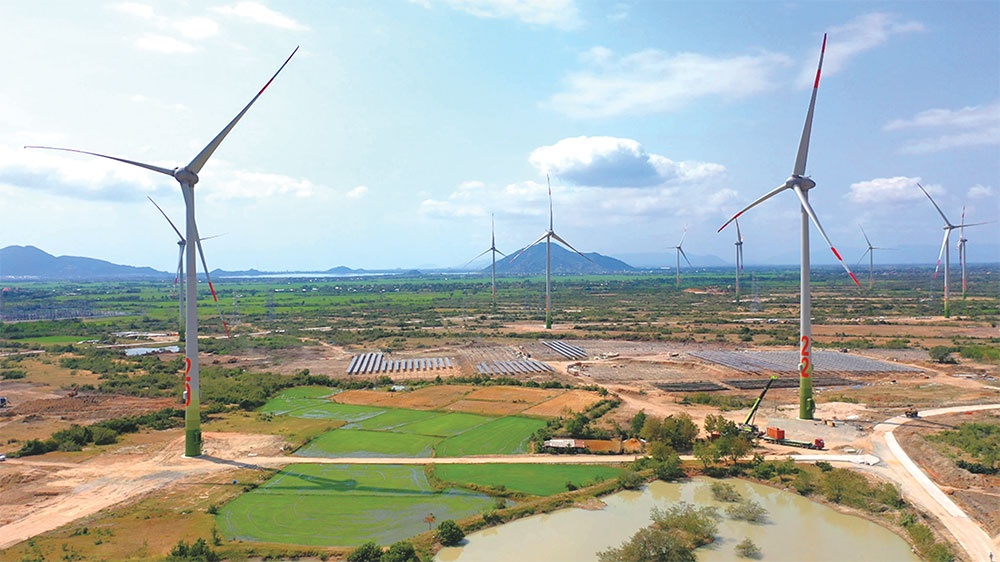 |
| Upgrading the country’s renewable options requires considerable effort as well as cash, photo Le Toan |
Bui Van Thinh, president of the Binh Thuan Wind and Solar Energy Association, stated that the finalisation of the policy will “encourage investment” in renewable energy, particularly rooftop solar power. “The government should come up with a new pricing strategy as soon as possible, guiding the bidding process and avoiding a policy void as with solar power in the past and wind power now,” he urged.
According to Thinh, there are two issues with Vietnam’s renewable energy development policy. Firstly, the average selling price of electricity in EVN is between 7.7 and 7.8 US cents per kWh, which is a quarter of that in developed nations. Currently, EVN’s purchase price for power from renewable energy sources is significantly higher than its selling price, transmission and distribution stages excluded.
Secondly, Vietnam’s transmission network is overstretched and deficient, with no regional connection. Vietnam has constructed 110kV transmission lines to Cambodia, 220kV transmission lines to China, and 500kV transmission lines to Laos, but the transmission capacity is minimal.
In Vietnam, the majority of investment in renewable energy comes from the private sector, with investors constantly prioritising profitability. According to Thinh, however, fresh funding and revamping of the power grid, regional linkage policy to export renewable electricity, when there is excess power, who will sell electricity, and at what price, are all policy-dependent.
Institutions continue to be viewed as the limiting factor in the development of renewable energy sources. At the National Assembly on June 1, lawmaker Nguyen Van Hien noted a “sudden alteration” in energy policy, concentrating on three key documents, including Decision No.21/QD-BCT dated January 7 on enacting the framework for electricity prices from transitional solar power and wind power plants.
“Policy inconsistencies make investors feel favouritism towards EVN,” he stated. “The price framework in Decision 21 did not accurately portray the correlation in the calculation of the annual electricity sale plan.”
| In 2022, renewable energy sources produced 35.7 billion kWh, which accounted for 13.2 per cent of the total electricity produced. According to a report dated November 2022 on EVN’s 2023 electricity system operation plan, the actual output of solar energy produced in 2022 was 26.3 trillion kWh, a rise of 723 million kWh compared to the plan. |
A different decision establishes a minimum average retail price of 0.9 US cents per kWh and an increase of 2.3 US cents per kWh for the maximum average retail price. In the meantime, the greatest ceiling price for transitional wind power plants and solar power plants is 21-29 per cent less than the fixed price mechanism outlined.
Upgrading power transmission lines or connecting regions to export excess power requires substantial funds. Dr. Can Van Luc, a member of the National Financial and Monetary Policy Advisory Committee, stated that Vietnam requires an average of $3.45 billion per year to invest in energy, but EVN and its National Power Transmission Corporation were only able to secure roughly $1 billion per year over the previous decade.
According to the Power Development Plan VIII, out of the total electricity development investment of $165.7 billion, $131.2 billion will be earmarked for power source development and about $34.5 billion will be spent on transmission.
“Securing the $1 billion per year public investment disbursement plan is crucial for the development of renewable energy and the power sector,” Luc said. “Even though it only accounts for about 29 per cent of the annual investment requirement for electricity, capital from the state budget has a significant impact as a primer, given that the power transmission infrastructure has been identified as an impediment in Vietnam’s electricity industry.”
The lack of electricity in the north during the months of May and June poses issues for the energy sector, highlighting the capacity of renewable energy sources to respond. On May 19, the National Load Dispatch Centre determined that the quantity of electricity mobilised from solar and wind sources reached a record high of 115 million kWh. This means that wind and solar energy have contributed 12.5 per cent, which is greater than the median contribution of renewable energy in the first four months of this year, which was 11.5 per cent.
| Hoang Tien Dung - Director, Electricity and Renewable Energy Authority
Vietnam has achieved certain results in increasing the proportion of renewable electricity in its power system and has plans to develop emission-free and fuel-conversion sources. Currently, the MoIT is examining a variety of infrastructure development policies in order to mobilise optimal and high-quality renewable resources to achieve predetermined development objectives. Firstly, it is needed to modify and expand the Law on Electricity to fulfil the policy on investment, competitive tendering for the development of power sources, and transmission infrastructure in support of connection. Specifically, there will be the renewable energy development mechanism transitions from an initial support policy that encourages market growth to a competitive tendering policy when market size and level change, allowing the market to determine the technology and price of electricity. Secondly, it is necessary to develop transmission infrastructure and invest in the construction of a power system synchronised with the power source and capable of highly automated, flexible operation from transmission to distribution. We will also utilise technology in the investment and development of the power grid to enhance transmission capacity while integrating renewable energy sources and thereby progressively forming a smart transmission grid. Dr. Nguyen Dinh Cung - Former vice director Central Institute for Economic Management
All calculations indicate that the north’s electricity supply in 2023 and 2024 is fraught with danger. This region has virtually no new source projects, a substantial installed capacity but no fallback system, and limited transmission capacity, which means electricity from the south and central regions cannot be transmitted to the north. Crucial to resolving the power shortage issue is preventing EVN from continuing to incur losses at the current rate. If the selling price of electricity remains below the purchase price, the budget must account for the loss. To draw capital into new renewable projects, it is also required to modify the operation of policy mechanisms and the approach to problem-solving in accordance with the market mechanism. Electricity shortages will generate business and investment opportunities rather than bottlenecks or impede economic growth, and this must be recognised by policymakers. Consequently, there must be a shift in policy formulation. Obviously, under the current circumstances, without drastic direction from the government, it will be extremely difficult to resolve the situation. Ngo Thi To Nhien - Executive director Vietnam Initiative for Energy Transition
In order to sustain a mature market, the renewable development strategy must be constant and transparent. However, Vietnam lacks a long-term national energy transition strategy such as technology adaptation, human resource development, a digitising policy to reduce source development costs, a transparent one-stop approval process for renewable energy projects, and equity in project access. Many parties have recently stated that in the future there will be no feed-in tariff for wind power and solar power but rather a price bidding mechanism. However, it remains uncertain how the bidding mechanism will be executed. The next renewable policy has been considered by the government over the past two years, but no decision has been made. The challenge of the next decade will be development of grid infrastructure for new sources of energy. Vietnam requires a mechanism with sources that is more equitable, such as organising bidding according to the form of energy or capacity, or vying for the maintenance of the electricity grid and infrastructure. |
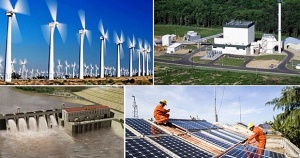 | ASEAN needs 29.4 trillion USD for energy transition to renewables Indonesian Energy Minister Arifin Tasrif has said that ASEAN countries need accessible low-carbon technologies and low-interest financing from multiple sources to achieve their net-zero targets. |
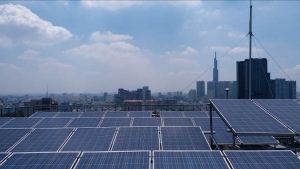 | Renewable energy policy needed to build momentum David Jacobs from International Energy Transition GmbH (IET) and Toby D. Couture (E3 analytics) have advised more than 50 governments worldwide on renewable energy policy and strategy, including over a dozen governments in the Asia Pacific Region, including Vietnam. |
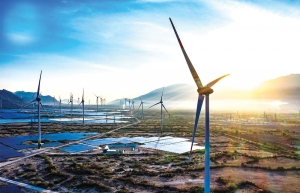 | Ideas rendered for precarious renewables position Luring investment into renewable energy in Vietnam will only happen if revised policies are crafted, industry leaders have insisted. |
 | AMI AC Renewables and Honeywell to pilot battery energy storage scheme AMI AC Renewables, through its subsidiary, AMI Khanh Hoa, has signed an MoU with Honeywell to collaborate on a battery energy storage pilot scheme in Khanh Hoa, Vietnam. |
What the stars mean:
★ Poor ★ ★ Promising ★★★ Good ★★★★ Very good ★★★★★ Exceptional
Related Contents
Latest News
More News
- Schaeffler reports strong early output from Dong Nai solar project (December 12, 2025 | 15:16)
- Forestry conference highlights biodiversity and sustainability goals (December 09, 2025 | 13:35)
- Home Credit honoured among top 10 sustainable companies in trade and services (December 09, 2025 | 12:18)
- SCG and seven member companies honoured in Top 100 Sustainable Businesses 2025 (December 08, 2025 | 09:00)
- Nestlé Vietnam pioneers sustainable development and promotes business connections (December 06, 2025 | 12:09)
- CSI 2025 highlights rise of Vietnam’s green champions (December 06, 2025 | 09:00)
- Acecook Vietnam named among top 100 sustainable businesses (December 06, 2025 | 08:00)
- Vietnam’s forest carbon credits draw global interest (December 05, 2025 | 17:41)
- Coro Energy to launch BESS Pilot in Vietnam (December 04, 2025 | 15:12)
- Vietnam strengthens energy storage pathway (December 04, 2025 | 15:05)

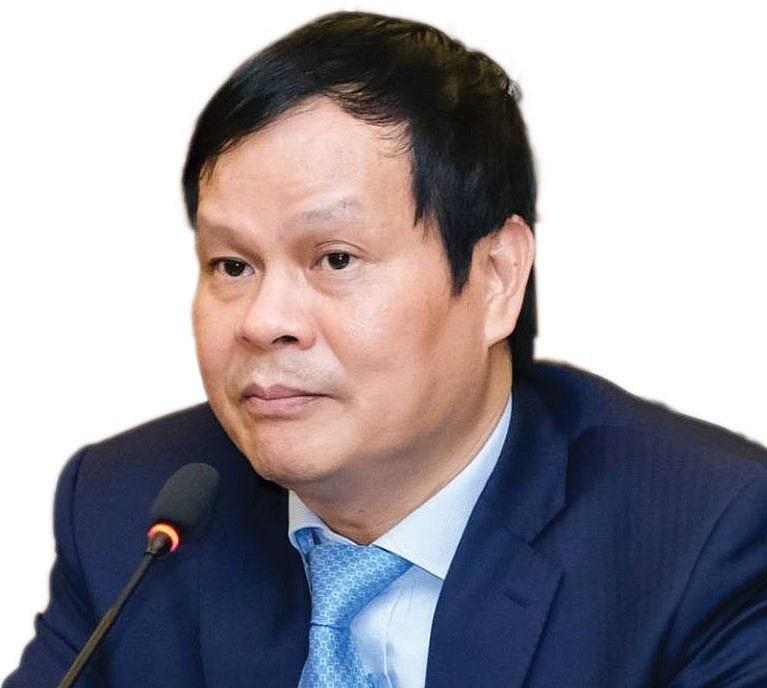
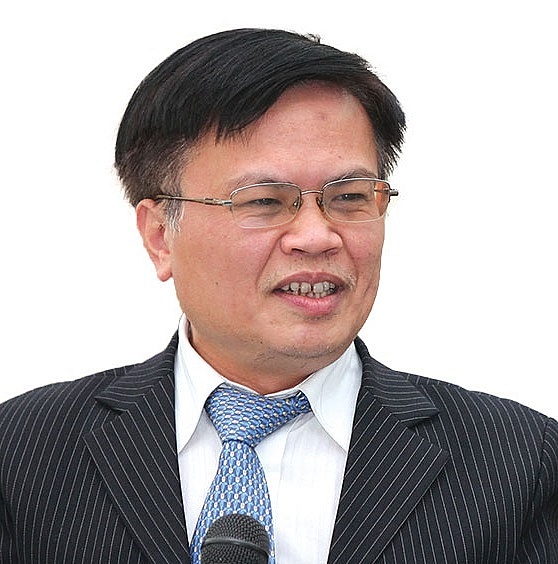

 Tag:
Tag:





















 Mobile Version
Mobile Version